100 Cherry Street Public Bath
100 Cherry Street at Catherine Street
New York, NY 10002
Opened: 1909
Cost: $205,348
The 100 Cherry Street bath house was located on a now-demapped section of Cherry Street just east of the anchorage to the Brooklyn Bridge. The bath house was located in the southeast corner of what became Jacob August Riis PS 126 in 1966. The bath house served Irish immigrants, and was only a few blocks from the Rutgers Place public bath. (historical sign), (historical sign).
Mike Lesko sent me this memory of the neighborhood:
I grew up on the Lower East Side from 1954 to 1968 and witnessed the demolition of this particular Public Bath as a child. In fact they used the old school wrecking ball on it, as was still common then. It was located within the leftmost footprint of the school in your photo below, off to the right at the time there were handball courts that relayed to what currently remains of the playground with the statue of Gov. Smith. This segment of Cherry Street had already been de-mapped so the bath structure was in the grounds of the public housing development but clearly fronted on what had been the continuation of Cherry Street. I lived across the street in Knickerbocker Village, with many friends and relatives in the Smith projects also, as youngsters we played both in Tannahey and the project's small playground in between the public bath/current school site and the development's 20 Catherine Slip building.
The area of tenements that the bath house served became the Alfred E. Smith Houses, a 12-building, 1,931-unit NYCHA complex on 21.75 acres that was completed April 1, 1953. The superblock layout cut off Cherry Street at Catherine Street. The complex is named after a former NY governor (1919 - 1927) and Democratic presidential candidate (1928). Smith was also influential in early 20th century municipal redevelopment on the Lower East Side (where he was born). He is also notable for appointing future development czar Robert Moses to the NYS Council on Parks in 1924, a move that would lead to a radical transformation of infrastructure in the NYC metro area - not all of it for the best.
The former PS 114 behind the recreation center and next to the Alfred Smith Playground was spared the wrecking ball when the complex was built, and the school became a family shelter.
Cherry Street used to run all the way south to where the Brooklyn Bridge north approach currently stands. Number One Cherry Street was George Washington's presidential mansion. Tantilizingly, the anchorage contained habitable space at one point and two bricked-in entrances hidden behind on-ramps to the FDR drive are vaguely reminiscent of the separate men's/women's entrances used for bathhouses.
Just to the east of the former bath house site is Knickerbocker Village, which was built on five acres bounded by Catherine, Monroe, Cherry and Market streets to house around 4,000 people in a sequence of 12-story buildings clustered around two central courtyards. At the time it was completed in 1933, it was unusual for its scale and it presaged the urban renewal efforts of the 1950s and 1960s. The complex was built on the Lung Block, a squalid group of overcrowded tenements with one of highest rates of tuberculosis in the city. 386 poor, mostly-Italian families were evicted to clear space for this new middle-class housing complex, partially built with federal funds.
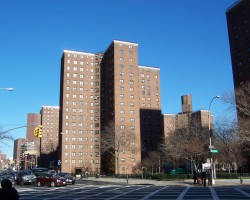
Smith Houses
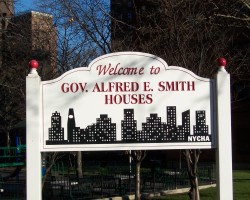
Smith Houses
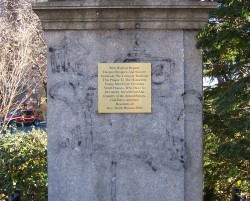
2002 armed forces plaque
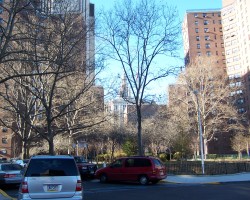
Playground
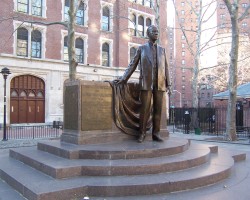
Alfred E. Smith Statue
40.71085128616733, -73.9973690841439
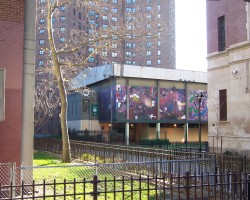
Alfred E. Smith Recreation Center
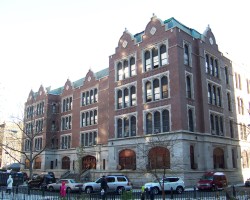
Catherine Street Family Respite Shelter / Former PS 114
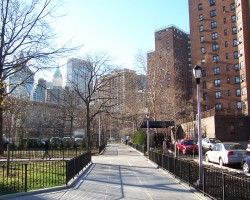
Playground south of Catherine Slip

Brooklyn Bridge north anchorage
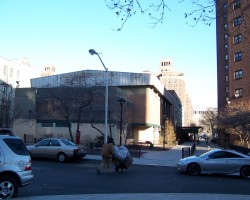
Alfred E. Smith Recreation Center
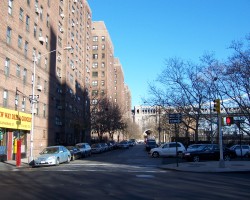
Cherry Street east of the former bath house
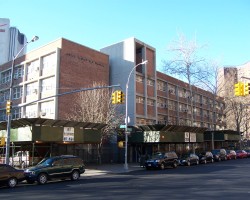
Jacob Riis PS 126

Knickerbocker Place
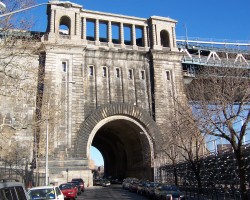
Manhattan Bridge anchorage
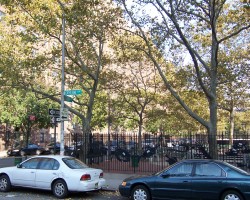
Tanahay Playground